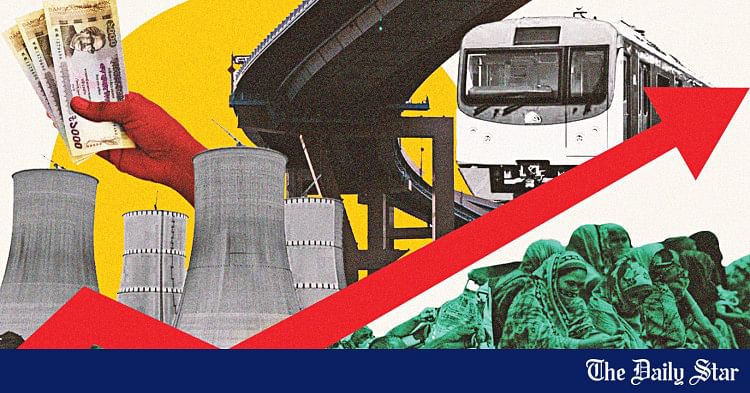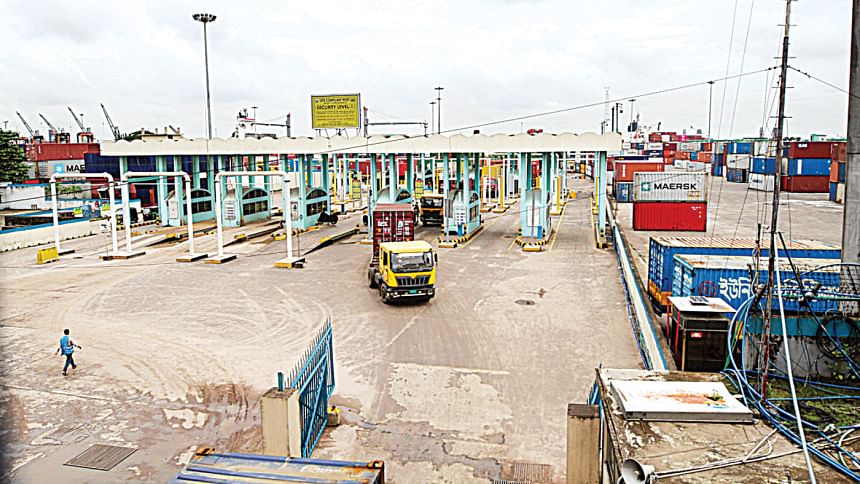VISUAL: SHAIKH SULTANA JAHAN BADHON
“>
VISUAL: SHAIKH SULTANA JAHAN BADHON
Bangladesh has grown consistently over a decade to reach close to half a trillion dollars in GDP and is expected to graduate to middle-income status by the end of the decade. However, despite improvements in GDP per capita, Bangladesh is experiencing increased inequality, climate change risks, a shaky financial sector riddled with non-performing assets, and inadequate infrastructure, whether in logistics, affordable housing, education, or health.
Unfortunately, traditional financing models have resulted in these critical sectors being underfunded, impeding sustainable and economic growth. To solve these problems, we all need to come together (read: more public-private partnerships) as an ecosystem. This is where innovative and sustainable finance (ISF) can expedite inclusive economic growth. When used correctly, ISF can unlock new sources of capital while aligning incentives with social and environmental impact. So, what are the ways ISF can actually work?
One way ISF can be leveraged is by providing catalytic capital to initiatives that do not have enough funding to take off. Essentially, this instrument creates a blend of different types of financing to de-risk investments for commercial capital. Let us now look at concrete examples of how this works.
CREDIT GUARANTEE AND/OR FIRST-LOSS CAPITAL
Investors and businesses may back out of initiatives that generate significant public good, such as those in education or health, due to higher risk profiles and longer payback periods. By providing a partial or full credit guarantee or covering first loss (i.e., if the project is unsuccessful, the principal invested will be covered), the riskiness of the venture is reduced. Typically used by development banks, this instrument, when applied effectively, can unlock much-needed funding for healthcare services, clean energy, and climate infrastructure.
PERFORMANCE PAYMENTS AND OUTCOME-BASED FINANCING
Mission-driven businesses generate measurable positive impact. Properly managed impact metrics can be utilised to access development capital. In this model, the investor—be it a development organisation, a corporate foundation, or an impact investor—and the investee (the mission-driven business) agree on a set of target KPIs that demonstrate positive outcomes for a specific population. Based on achieving these KPIs, the business receives payments. This de-risks investments for the business and ensures that payments from the development organisation are contingent on actual results—no cure, no money.
If the KPIs are designed correctly, they can drive meaningful impact. For example, instead of tying funding to farmer training, it could be linked to increases in farmer income and productivity. This approach can be applied across various sectors, including agriculture, education, health, financial inclusion, and affordable housing. It can also be used to incentivise innovative solutions from startups by providing them with seed capital and de-risking investments for their investors to some extent.
Bangladesh still suffers from inadequate infrastructure, whether in logistics or other areas. PHOTO: RAJIB RAIHAN
“>
Bangladesh still suffers from inadequate infrastructure, whether in logistics or other areas. PHOTO: RAJIB RAIHAN
SUSTAINABILITY BONDS
Sustainability bonds (SBs) come in many forms, such as orange bonds (popularised by IIX, Singapore), green and climate bonds (linked to greening, circularity, and decarbonisation), and blue bonds (linked to ocean and biodiversity sustainability). These bonds attract capital from investors with the promise of impact (often tied to ESG and/or SDG goals) and a fixed return over a specified period. Unlike outcome-based financing, where the investor takes a risk on an individual venture, sustainability bonds benefit from diversification at the portfolio level.
benefit from diversification at the portfolio level.
These bonds can be issued by the government, giving them a sovereign-level credit rating, but they have also been used by financial institutions and development organisations. SBs can fund critical services such as education, finance, health, and agriculture, as well as support the greening and decarbonisation of major manufacturing industries. In Bangladesh, the most immediate target would be the garments and textiles sector. Properly designed, SBs can generate significant social, environmental, and community benefits.
However, ISF is not without its challenges. One major issue is the design complexity of such instruments and the resources required for compliance, reporting, and governance. For example, first-loss capital or credit guarantees require excellent forecasting models to predict default rates, and setting up governance systems can be costly. Similarly, while outcome-based financing ties funding to success, it also requires robust data collection and impact measurement, which can be expensive and difficult to implement. Sustainability bonds have often faced scepticism due to “impact washing” and, in some cases, have not matched market returns given their risk profile.
THE WAY FORWARD FOR ISF IN BANGLADESH
To fully leverage the benefits of innovative and sustainable finance in the short run, Bangladesh can take three key steps:
1) Develop incentive mechanisms such as tax breaks for businesses in specific sectors and/or risk-sharing mechanisms for sustainability bonds and catalytic capital.
2) Conduct pilot ISF projects in critical sectors using a multi-stakeholder approach, involving investors, banks, financial institutions, startups, and both the private and public sectors.
3) Establish strong data transparency and measurement frameworks to attract the right innovators and investors, particularly for performance and outcome-based financing models.
When implemented correctly, ISF can help Bangladesh not only transition to a middle-income economy but, more importantly, become an inclusive middle-income country.





